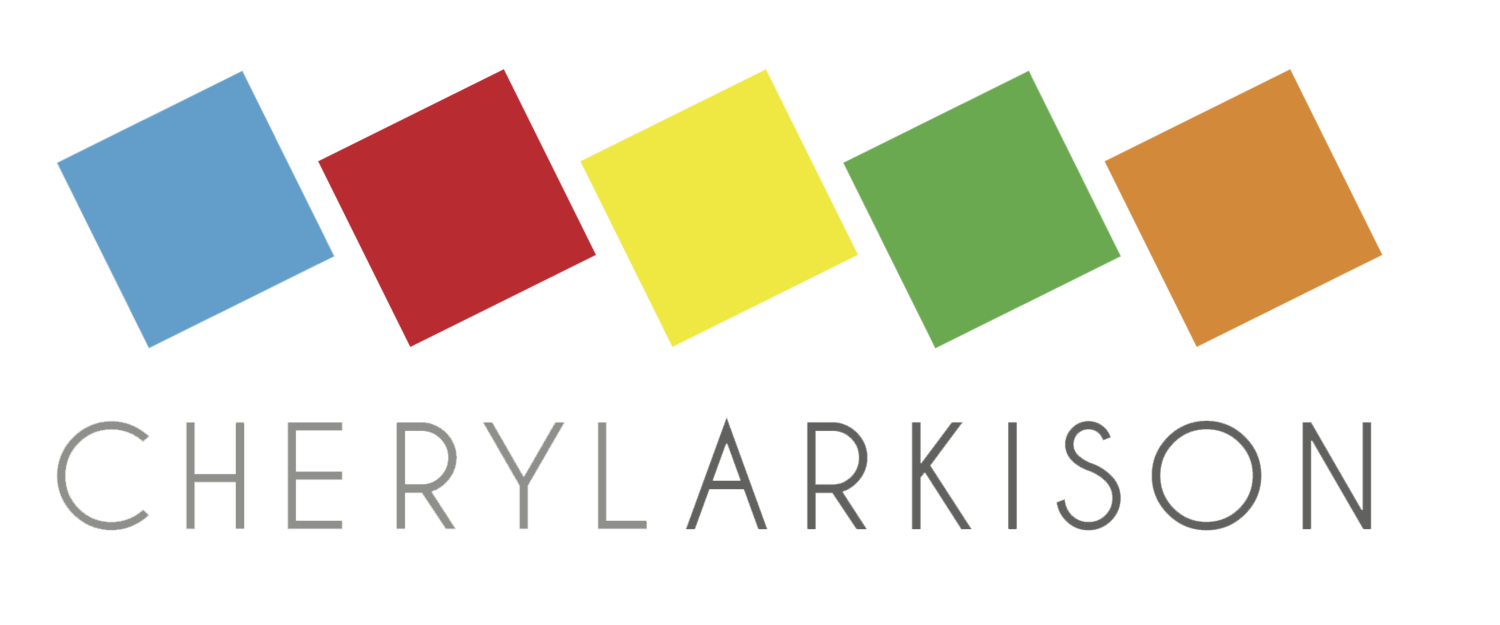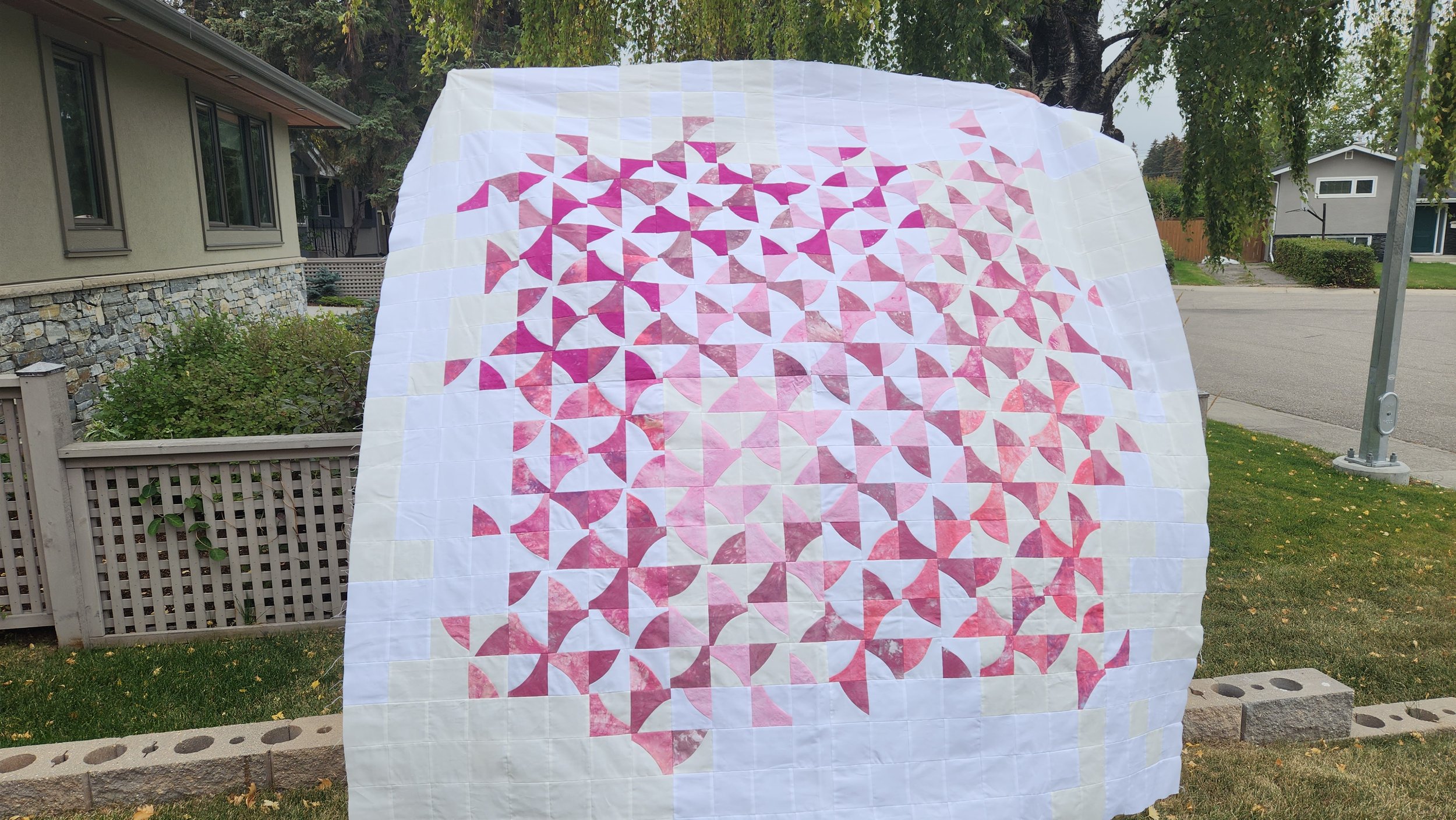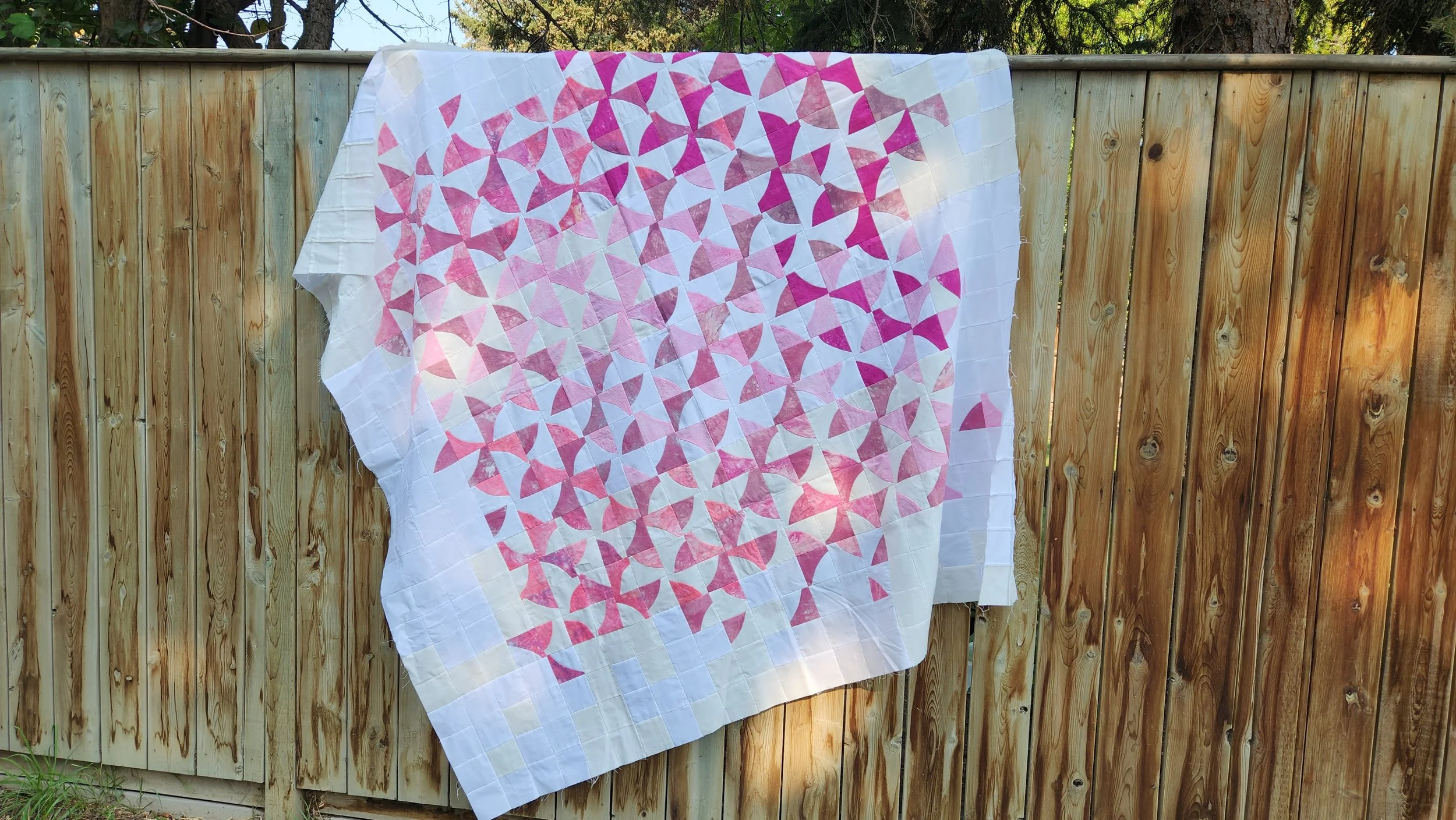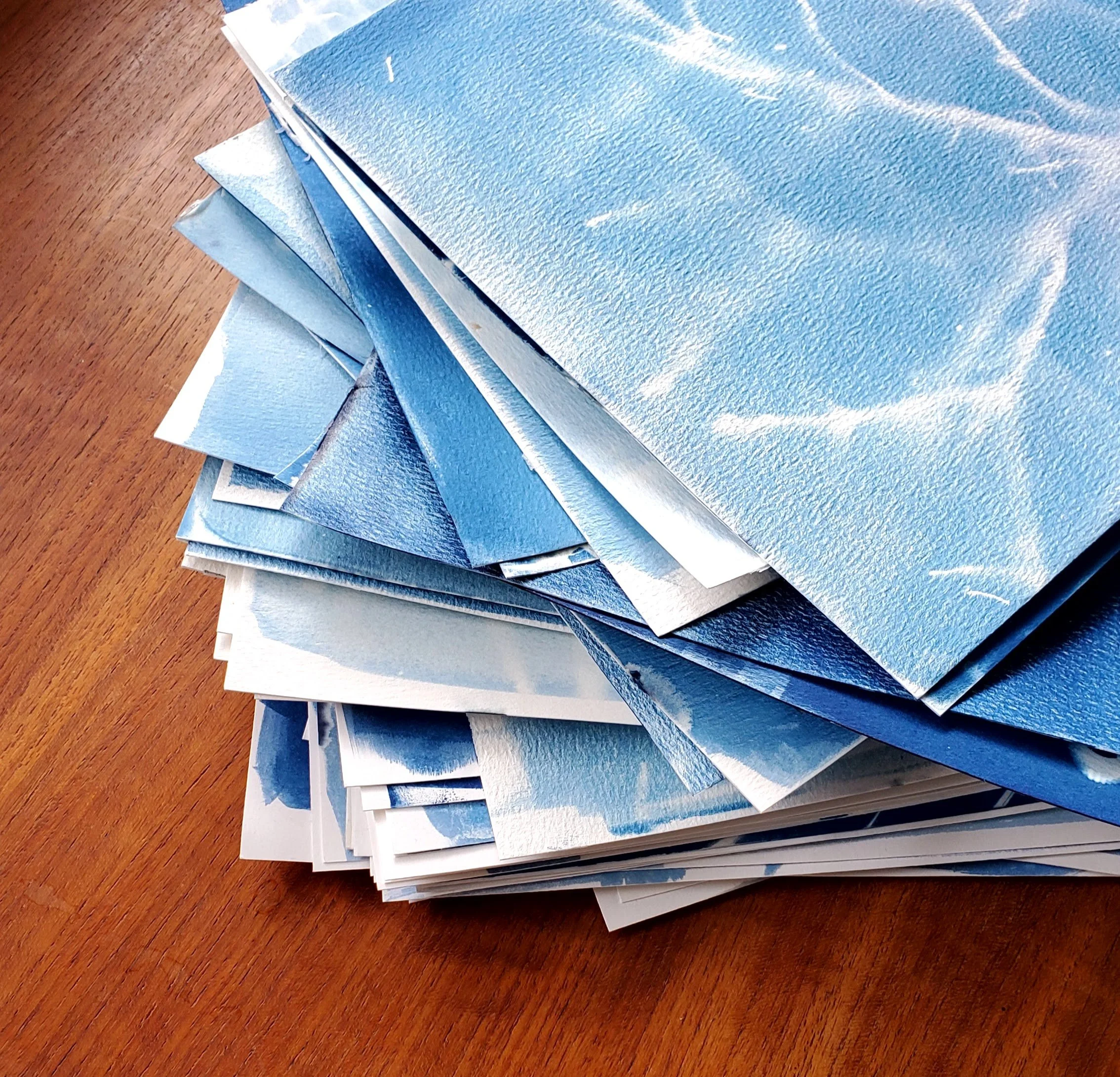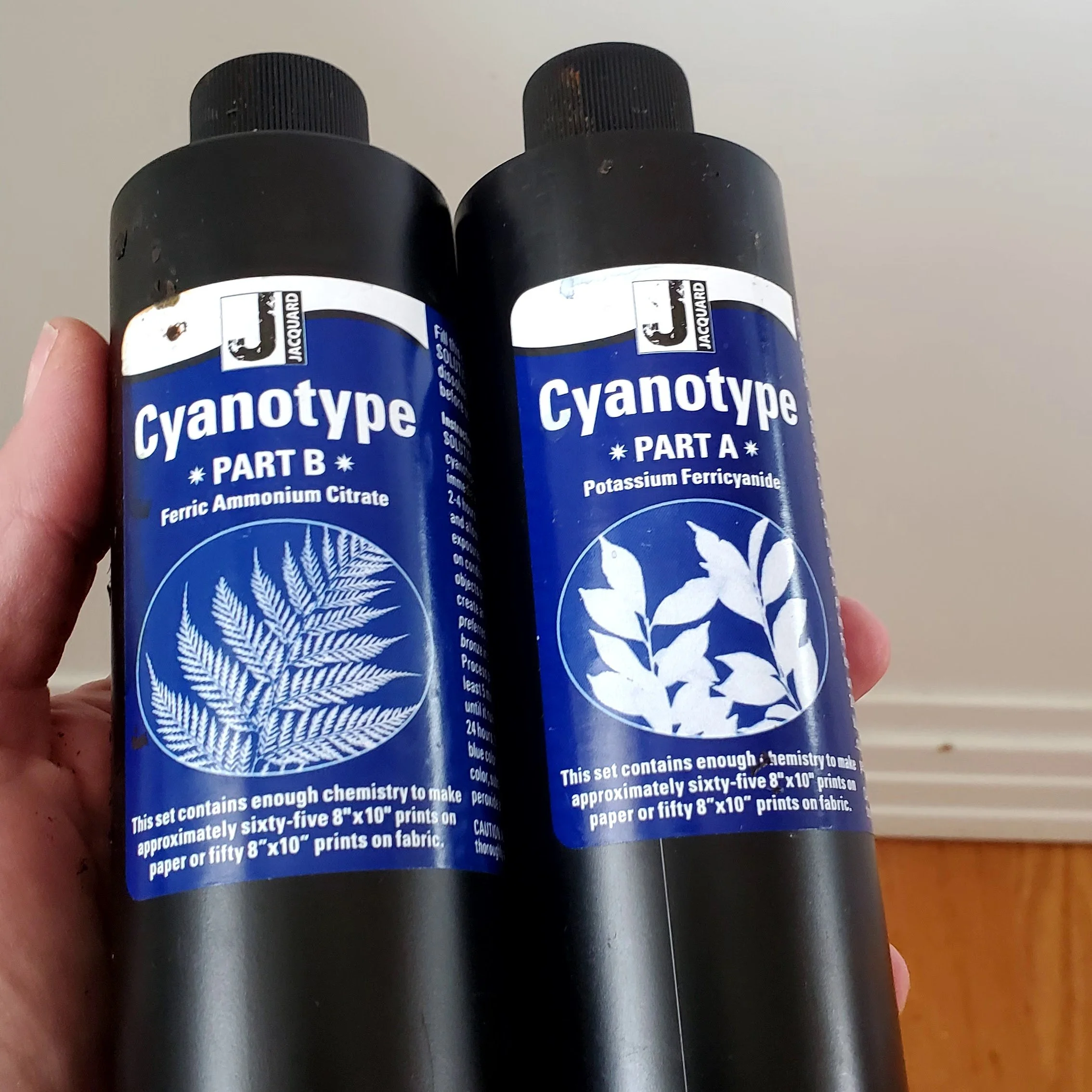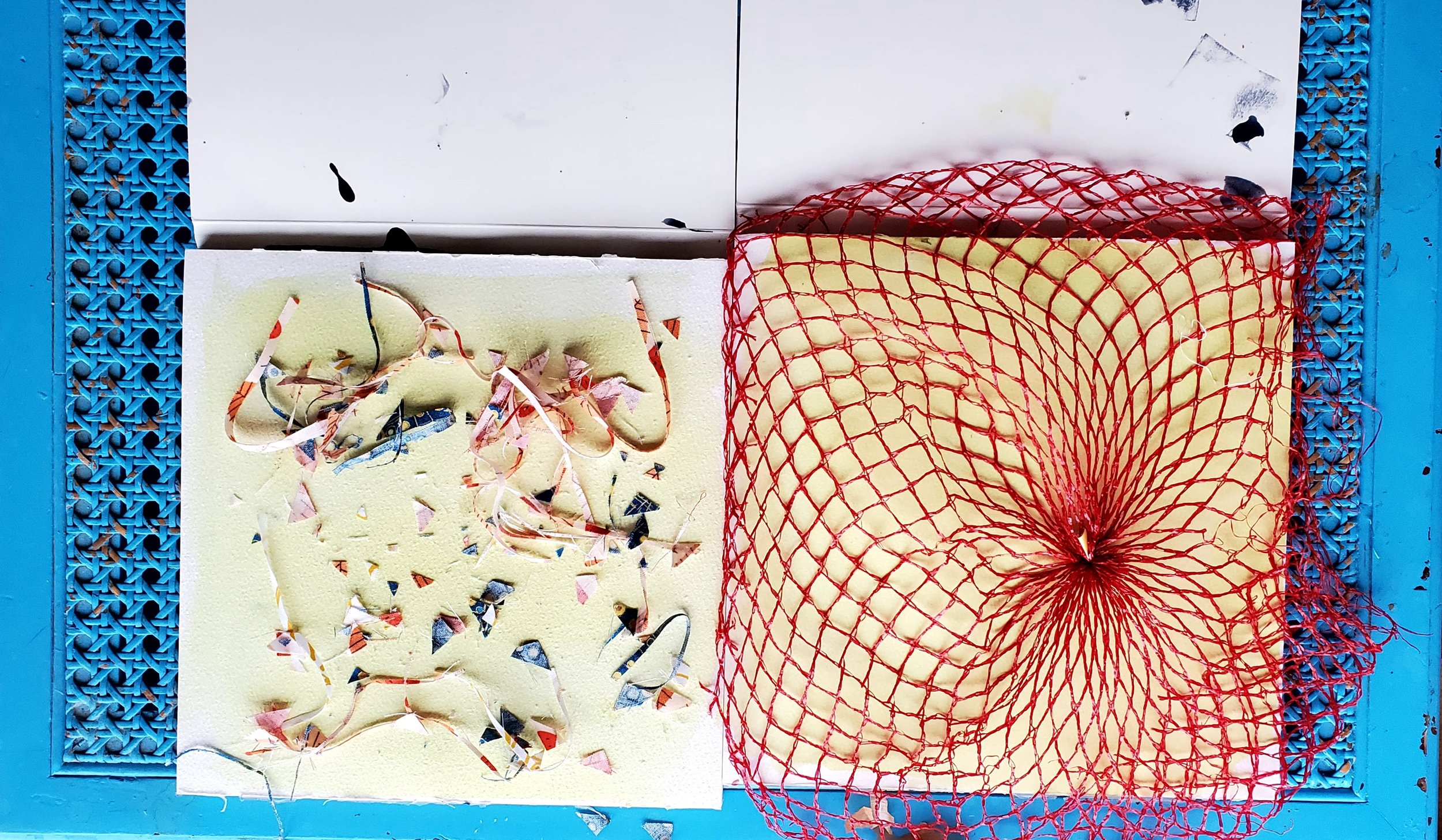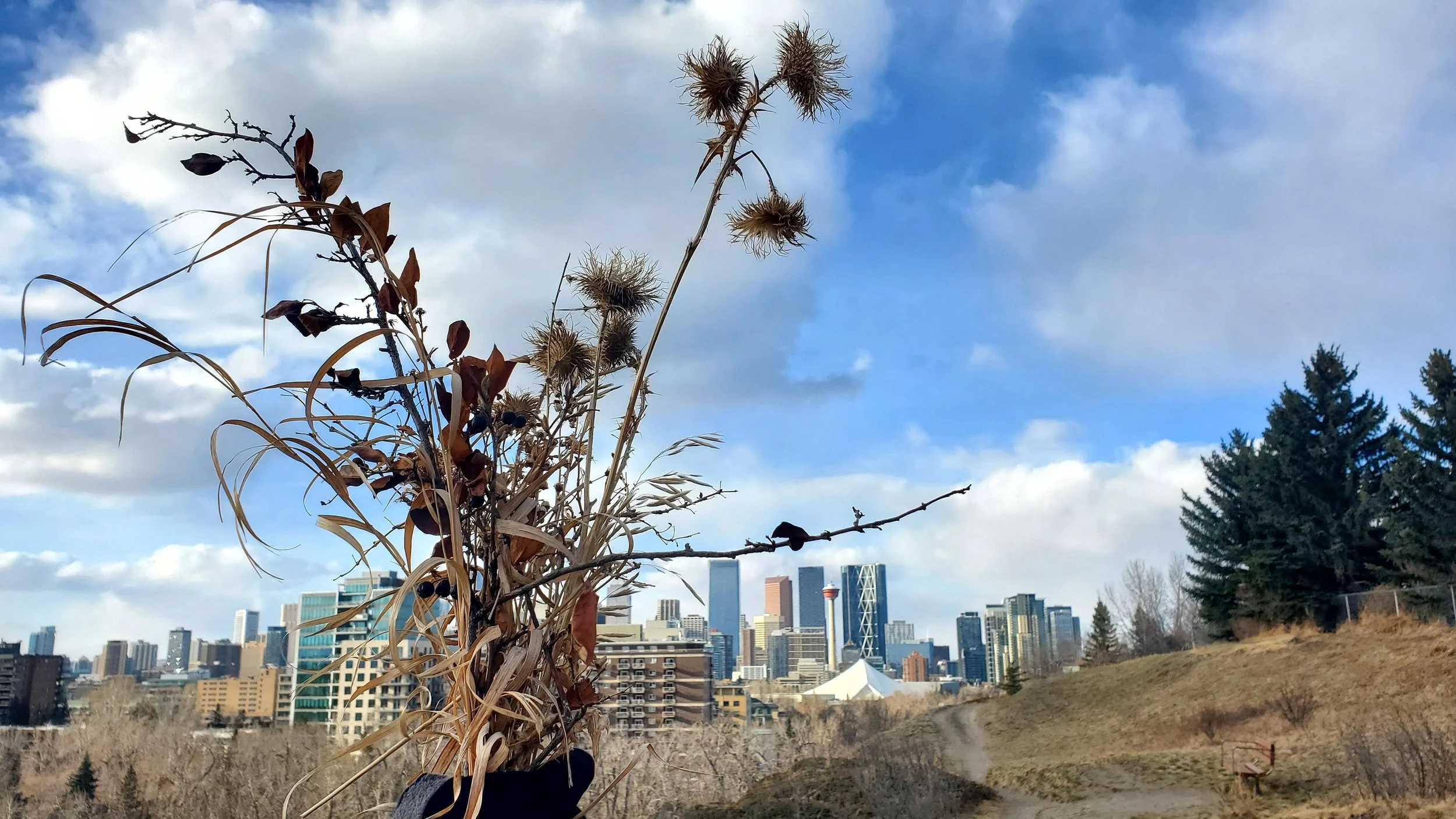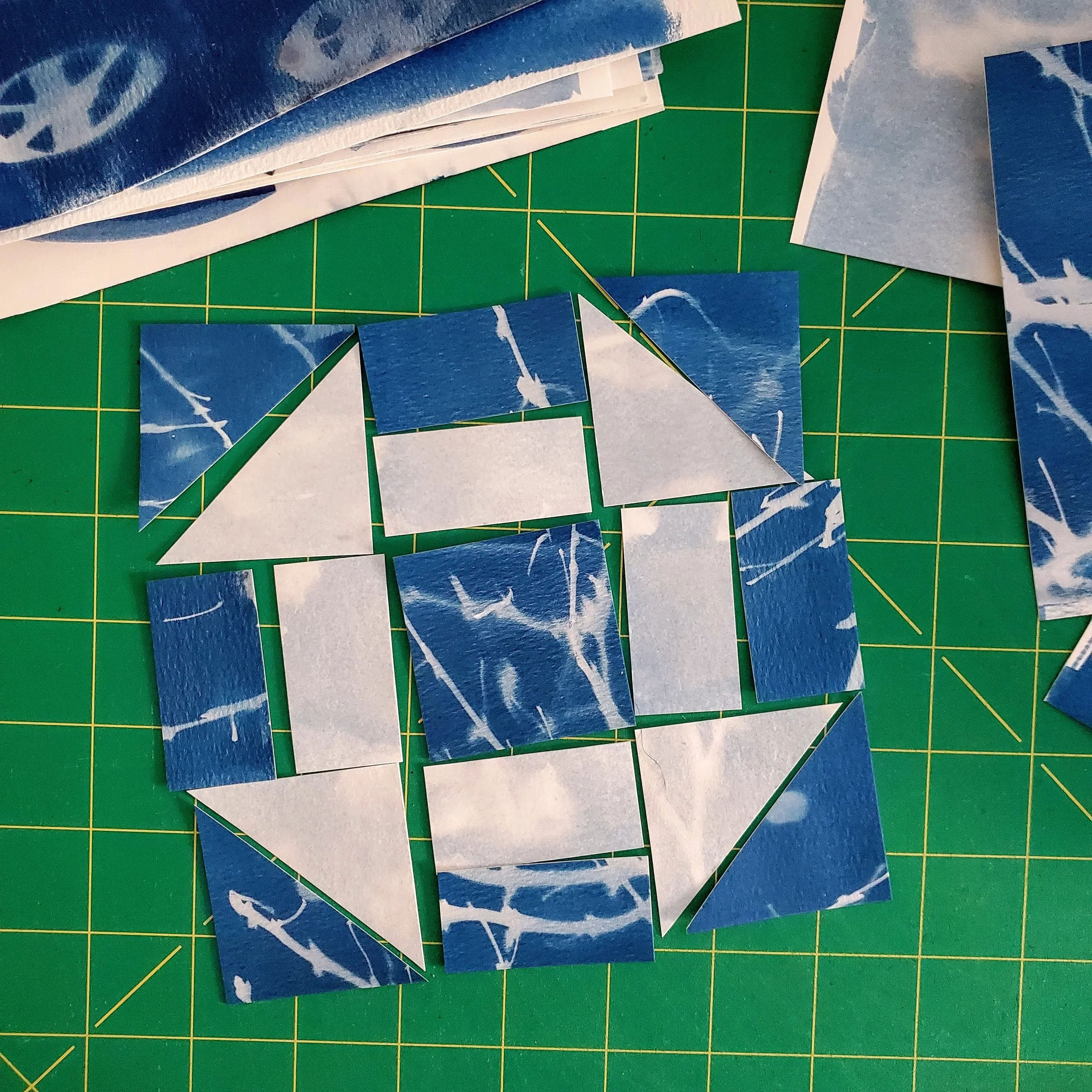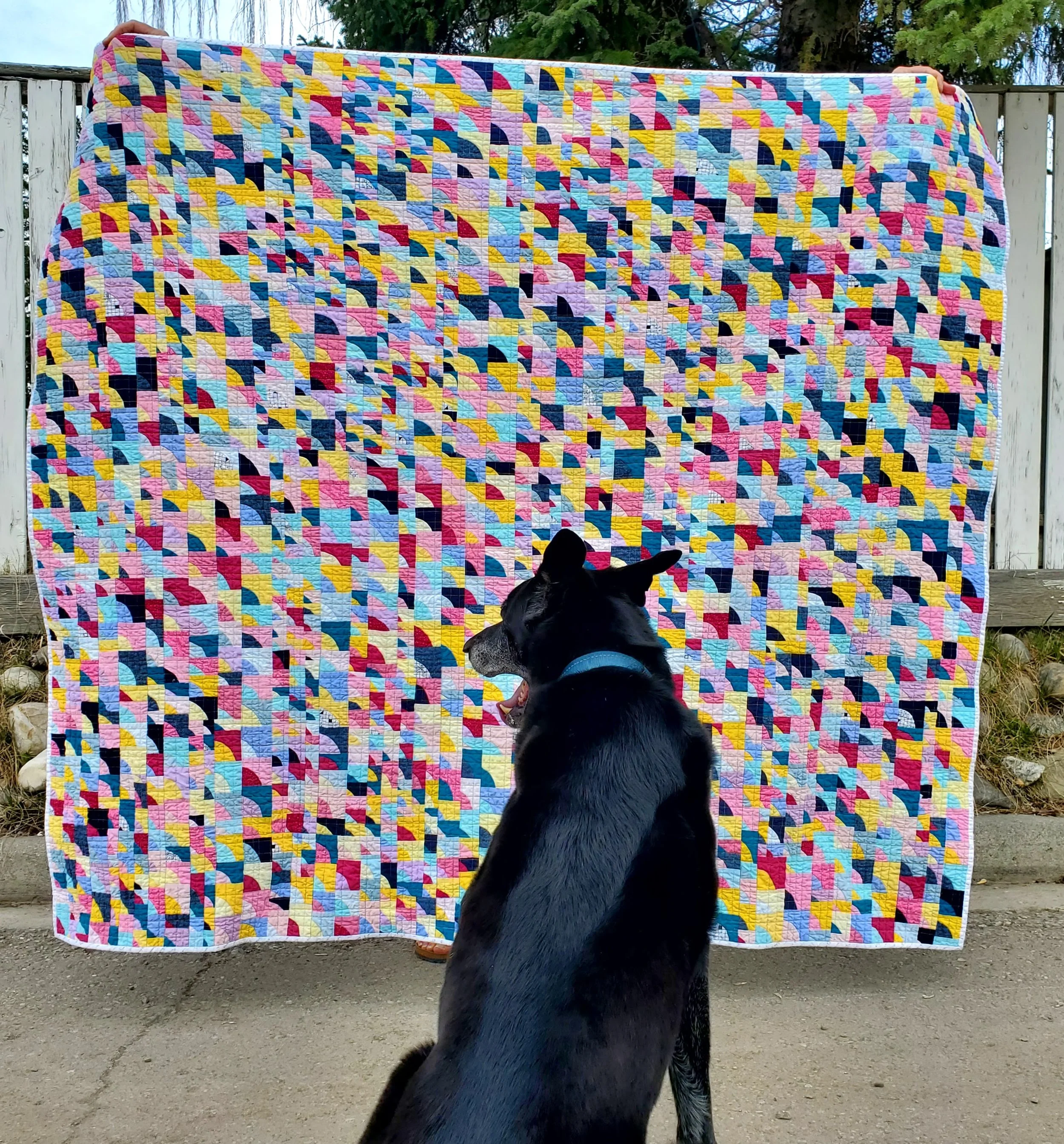Not too long ago someone asked me how I design a quilt. Like, how do you go from idea to finished quilt? For all that I talk about play and experimentation, my answer was a bit of a cliche. The truth is, I rarely design a quilt. Instead, I try an idea out and see if it works, see if it grabs me. If I like it, then I make a bunch of things My great pleasure comes when I am trying to make all those things look good together. That is also the greatest challenge. When the last seam is stitched 90% of the time I could never have predicted (designed) the quilt I ended up with.
This particular quilt, for instance, actually started with a sample block for a virtual class. The pinks were piled up, rejects from my Perimenpause Chronicle Quilt. So when a request came from a student for a particular make I grabbed what was on the top of the table. The block worked, I set it aside. And honestly? I didn’t think about it again for months. The next time I pulled it out for a class it never got put away. Then, back in May it popped into my line of sight and I decided to make a second block. It was with the third block that I realized I’d gone from an experiment to a quilt top.
So I just made my way through the pile of hand dyed fabric. First I used all the pink pinks. That didn’t get me very far so I used the more purply ones too. I don’t really like to make small quilts and I was then out of enough of the pink and purple fabrics so I dyed some more. They ended up a lot lighter and I debated trying again but decided to just make it work.
Another thing I had to make work was the background fabrics. Somewhere along the way I grabbed a different white than the one I started with. Because I was mostly working in the evening, under artificial light, I didn’t notice immediately. I had a choice to make - redo the blocks with the different white or keep going. Because I am kind of lazy I kept going. But what I did was embrace the differences and made the remaining blocks a mix of both whites. That way your eye wasn’t going to be drawn straight to the outlier.
The amount of pink fabric I had was going to make a 48” square quilt when all was said and done. Not too shabby, really. By this point though, this quilt - puttering on this quilt - was really helping my mental health so I decided I wasn’t ready to stop making. I spent a fair amount of time contemplating things on the design wall then decided on something akin to a border. In places the pink curves extend out beyond the centre square. Most of the outside is white, however. Rather than make it a solid white and have. bunch of weird piecing to accommodate those extra pink bits I made the border out of the same size 16 patch blocks as the centre. So really, the quilt top is basic patchwork of 576 4” squares.
We won’t talk about the backing debacle, but I am back on track to get this basted shortly. I plan on a mix of machine and hand quilting so I would like it ready for when the snow flies and we are indoors a bit more.
